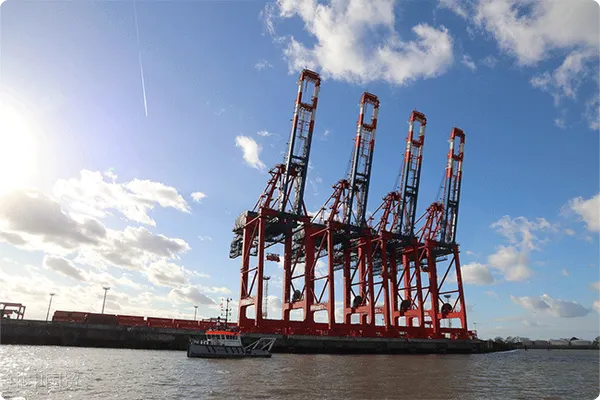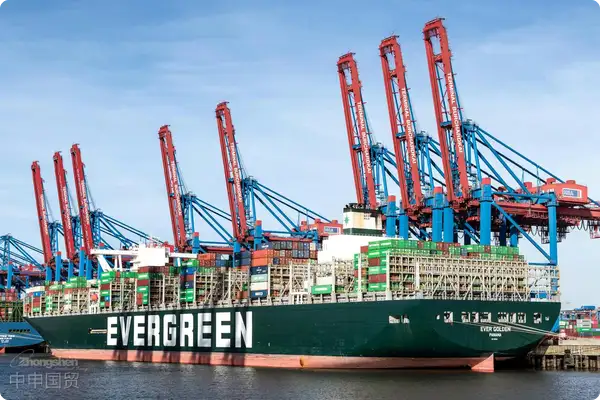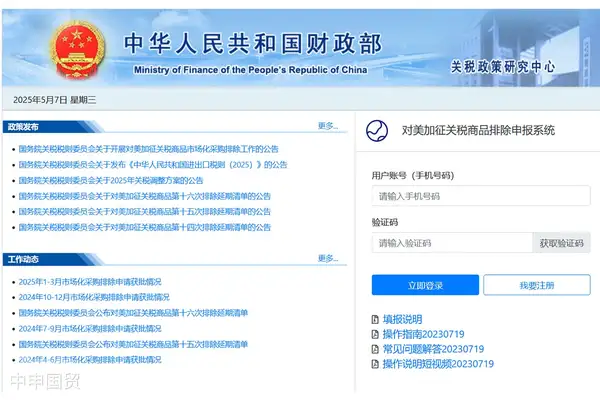Electronic Equipment Import Agency Guide: 3 Steps to Solve Certification Puzzles
天天干天天日天天干天天日狠 |
欧美三级在线观看不卡1区 |
韩日国产精品一区二区三区 |
国产免费av一区二区三区 |
国产一区二区三区日韩精品 |
精品美女视频一区二区三区
|
国产自拍偷拍在线一区二区 |
精品五月天草原婷婷在线视频 |
av小说亚洲日中文字幕 |
人妻体体内射精一区二区
|
亚洲熟女自拍偷拍一区二区 |
国语自产拍在线观看国产精品 |
欧美成人午夜电影在线观看 |
一区二区三区在线观看日韩 |
国产欧美日韩精品久久久 |
97久久伊人嫩草一区二区三区 |
日韩欧美精品视频一区二区三区 |
在线观看特黄片一区二区二区 |
亚洲国产精品线路久久 |
亚洲综合欧美综合视频一区 |
亚洲欧美日韩加勒比在线 |
后入亚洲美女一区二区三区
|
亚洲国产天堂久久综合网 |
久久精品国产亚洲av蜜屁股 |
青青久在线视频视频在线 |
午夜精品久久久久久久第一页 |
78色精品一区二区三区 |
久久一区二区三区欧美亚洲 |
亚洲av日韩高清在线观看 |
亚州女同性恋一区二区三区 |
久久91精品国产丰满美女 |
同房后女生下面有黄色分泌物 |
国产精品亚洲av蜜桃三区 |
国产精品日本欧美一区二区三区 |
久久精品国产亚洲一级二级 |
最近中文字幕高清免费大全 |
国产农村妇女一二三区 |
国产性情片一区二区三区
|
亚洲国产精品久久久久性色av |
都市激情校园春色亚洲成人 |
亚洲成av人黄网站在线观看 |
亚洲综合欧美综合视频一区 |
欧美一区2区三区4区网站 |
亚洲一区二区三区在线高清 |
国产综合久久久一区二区三区 |
亚洲春色另类小说校园 |
精品少妇久久一区二区三区
|
亚洲一区二区三区自拍偷拍 |
国产性情片一区二区三区 |
国产中文高清日韩av网站 |
日本一区二区免费在线视频 |
国产欧美日韩精品久久久 |
五月激情综合婷婷六月久久 |
国产精品一区二区剧情熟女 |
欧美日韩一区二区啪啪啪 |
欧美色偷偷在线视频播放 |
一区二区三区av 在线播放
|
欧美日韩国产欧美日韩国产欧美日韩
|
亚洲欧美日韩在线精品2区 |
中文字幕欧美老熟妇一区二区
|
欧美日韩国产精品系列区 |
欧美精品一区二区三区日韩
|
中文字幕高清在线一区二区三区
|
国产午夜精品理论片免费视频 |
视频区自拍偷拍一区二区 |
久久久精品免费久精品蜜桃 |
国产精品一区二区白浆视频
|
日韩av一区二区三区免费观看 |
国产99视频精品免费视频美女 |
亚洲成a人片在线观看无遮挡 |
开心五月激情五月婷婷综合网
|
在线播放亚洲欧美日韩第一区 |
日韩一区日韩二区日韩三区 |
国产精品性色一区二区三区在线蜜 |
日本精品动漫一区二区三区 |
在线观看免费视频伊人网 |
日韩精品一区二区三区不长视频 |
欧美日本一区二区免费看 |
欧美日韩视频在线一区二区三区 |
亚洲色图日韩综合在线观看 |
中文字幕人妻一区二区人妻高清 |
亚洲十八禁在线免费观看 |
欧美一区久久人妻中文字幕 |
中文字幕一二三四区亚洲乱码 |
欧美日一区二区三区精品 |
久久精品国产88久久综合张津瑜 |
国产网曝门精品一区二区三区
|
国语自产精品视频在线视频学生 |
综合图区亚洲欧美另类图片 |
日本大香伊一区二区三区 |
五月综合婷婷开心综合婷婷 |
人人妻人人妻人人妻碰碰 |
久久国产亚洲精品超碰热 |
久久精品三级一区二区av |
激情五月婷婷丁香六月
|
亚洲欧美日本在线视频观看
|
亚洲av色一区二区三区精品东京热 |
欧美老人与小伙子性生交 |
中文字幕欧美老熟妇一区二区 |
免费看污片网站在线观看 |
大香蕉再在线大香蕉再在线 |
亚洲精品高清视频在线播放
|
少妇的一区二区三区四区 |
亚洲国产日本一区二区三区 |
精品亚洲国产成人痴汉av |
中文字幕精品乱码亚洲一区 |
国产欧美日韩一区二区三区精品 |
亚洲国产av一区二区三区 |
99久久精品免费看国产一区 |
国产黄a三级三级三级av在线看 |
欧美一区二区三区四区五区 |
午夜午夜精品一区二区三区 |
欧美日韩亚洲中文字幕一区 |
最新国产日韩欧美中文在线 |
18禁真人污视免费网站 |
亚洲黄色av电影手机在线观看 |
99精品免费久久久久久久久 |
在线观看免费视频伊人网 |
国产日本欧美在线一区二区 |
日韩男女激情片段在线观看视频 |
亚洲av噜噜噜一区二区三区 |
国内自拍偷拍网站一区二区 |
国产色综合一区二区三区视频精品 |
日韩欧美亚洲国产午夜在线 |
色狠狠一区二区三区蜜桃av |
欧美日韩国产亚洲乱码字幕 |
一区二区三级电影在线观看 |
日本东京热久久成人免费电影 |
亚洲av色图一区二区三区 |
99久久精品免费看国产四区 |
雅日韩欧美一区二区三区 |
国产一区久精品免费视频 |
欧美电影日本电影国产电影 |
久久国产精品骚熟女av |
欧美日韩加勒比激情系列 |
欧美一区两区三区在线观看
|
国产精品久久久久久成人 |
一区二区三区日本韩国欧美
|
日本一区二区不卡免费观看 |
十分钟做a小视频免费观看 |
黄色欧美精品一区二区三区 |
国产一区二区av在线播放
|
国产美女直播在线一区二 |
欧美日韩一码二码三区四区
|
18禁黄网站禁片免费观 |
国产精品免费在线一区二区 |
亚洲综合欧美综合视频一区 |
欧美一区二区三区免费观看视频
|
午夜激情丝袜美腿诱惑影院 |
亚洲天堂精品亚洲天堂精品课程 |
免费一区二区三区日韩欧美 |
成人污污视频在线观看网站 |
91视在线国内在线播放 |
亚洲成av人黄网站在线观看 |
日韩欧美中文字幕一区二区三区 |
久久蜜臀av一区二区中文字幕 |
亚洲精品aⅴ中文字幕乱码麻豆 |
欧美大片免费观看一区二区 |
久久国产午夜精品理论片3 |
天天天天天日夜夜夜夜夜夜操 |
亚洲精品色婷婷在线观看 |
精品一区二区三区av在线 |
最好看的日韩中文字幕电影 |
欧美一区二区自偷自拍视频 |
亚洲一区二区三区毛带片 |
日韩国产一区二区三区av |
亚洲欧美一区精品中文字幕 |
成人国产一区二区三区精品不卡
|
中国一区二区三区高清电影 |
日韩欧美亚洲乱码中文字幕 |
亚洲va欧美va天堂v国产综合 |
欧美日韩一码二码三区四区 |
美女露小粉嫩91精品久久久 |
你懂的国产精品永久在线 |
欧美激情国产日韩视频一区 |
亚洲中文字幕精品熟女一区 |
同房后下面流黄黄的液体
|
欧美日韩一区二区三区四区视频
|
中文字幕欧美老熟妇一区二区 |
久久精品国产一区二区涩涩
|
尤物精品国产第一福利网站
|
高清精品一区二区三区伊人 |
亚洲欧美日韩欧美中文字幕 |
久久99精品久久久久蜜桃tv
|
欧美黄片一区二区三区在线观看 |
国产精品久久久亚洲天堂 |
粉嫩av一区二区三区在线播放 |
美国毛片亚洲社区成人看 |
久超在线精品av一区二区三区 |
99re热这里只有精品视频 |
国产电影一区二区三区在线观看 |
日本一区二区免费在线视频 |
久久精品女人18国产毛片 |
亚洲黄色av一区二区在线观看 |
久久亚洲国产精品五月天 |
欧美日韩免费电影一区二区 |
国产日韩欧美一区二区在线高清 |
久久精品亚洲熟女av蜜謦 |
日本东京热久久成人免费电影 |
久久久精品少妇一区二区三区 |
亚洲熟女自拍偷拍一区二区 |
一区二区三区久久久久国产精品 |
适合一家人看的国产电影
|
一区二区三区高清视频精品 |
国产精品黄网站免费进入 |
国产亚洲欧美日韩看国产 |
国产欧美日韩精品久久久 |
中文字幕一区二区人妻秘书 |
国产欧美精品一区二区在线
|
欧美日韩中文字幕每日更新 |
91国偷自产中文字幕幕 |
欧美国产亚洲自拍第二页 |
国产伦精品一区二区三区2 |
视频一区二区三区四区五六区 |
欧美巨大精品一区二区三区 |
韩国三级电影善良的嫂子 |
亚洲产国偷v产偷v自拍一区 |
欧美中文字幕一区二区综合我 |
天天天天天日夜夜夜夜夜夜操 |
日韩精品中文字幕网在线 |
国内精品自线一区二区三区视频 |
日韩欧美中文字幕无敌色 |
精品久久久久久99蜜桃 |
欧美日一区二区三区精品 |
中文字幕欧美一区二区三区
|
婷婷99精品国产97久久综合 |
欧美成人精品一区二区综合免费
|
精品国产女同一区二区三区 |
欧美久久久久久久一区二区三区 |
亚洲国产一区二区在线网站网址
|
国产伦精品一区二区三区在线观 |
久久久久夜色国产精品亚洲av
|
青青草原在线视频观看精品 |
最近中文字幕mv免费高清 |
国产成人亚洲综合小说区 |
国产精东av剧情在线一区二区
|
久久九九视频免费观看久久九九视频
|
亚洲日本国产一区二区精品成人 |
亚洲欧美日韩中文字幕高清 |
色婷婷综合午夜色荡天天 |
亚洲一区二区三区毛带片 |
日本高清不卡中文字幕免费
|
欧美日韩国产亚洲乱码字幕 |
亚洲国产日韩精品一区二区三区 |
日本精品免费偷拍小视频网 |
92看看午夜福利合集免费观看 |
国产盗摄一区二区三区厕所视频 |
欧美巨大精品一区二区三区 |
久久精品噜噜噜成人av |
亚洲中文字幕日韩一区二区 |
美女洗澡私拍一区二区三区 |
日韩人妻精品一区二区三区在线 |
美美女高清毛片免费视频 |
手机在线不卡二区中文字幕 |
久久久精品国产亚洲av网丝祙 |
国产不卡手机在线观看 |
亚洲国产成人精品毛片九色 |
手机在线一区二区三区观看 |
久久精品人妻一区二区三区一 |
亚洲av毛片一区二区三区影视 |
网友自拍偷拍视频一区二区 |
亚洲国产日韩欧美高清片 |
国产精品夜夜春夜夜爽久久小
|
尤物精品国产亚洲亚洲av麻豆 |
久热这里只有精品视频在线 |
日韩欧美一区二区三区三 |
91精品久久久久久粉嫩 |
欧美亚洲国产日韩品久久 |
午夜视频久久播五月婷婷 |
久久精品亚洲熟女av蜜謦 |
51国产午夜精品免费视频 |
国产欧美亚洲精品第一页 |
天天天天天日夜夜夜夜夜夜操
|
欧美激情第一页在线播放 |
伊人影院在线免费观看电影 |
午夜天堂av天堂久久久 |
色哟哟一区二区国产精品 |
国产日本欧美在线一区二区 |
91一区二区三区久久国产乱 |
亚洲色图国产精品一区二区三区 |
综合自拍亚洲综合图区欧美 |
国产欧美在线一区二区三 |
51国产午夜精品免费视频 |
在线播放国产久草性av |
日韩精品自拍偷拍一区二区 |
最新国产免费成人色av |
亚洲国产色一区二区三区 |
欧美中文字幕一二三四乱码 |
国产一区二区三区久久综合
|
久久精品噜噜噜成人av |
精品一区二区免费视频蜜桃 |
久久婷婷六月丁香综合啪 |
后入亚洲美女一区二区三区 |
日韩精品在线观看一二三 |
国产欧美精品区一区二区三
|
一区二区三区在线视频欧美 |
欧美黄色一区二区在线观看 |
精品一区二区三区视频男人吃奶 |
日韩一区二区三区四区在线观看视频 |
欧美日韩国产亚洲乱码字幕 |
国产自产一区二区三区视频 |
av免费精品一区二区三区蜜桃 |
亚洲av噜噜噜一区二区三区 |
99久久精品免费看蜜桃 |
亚洲欧美中文日韩另类特殊 |
av免费精品一区二区三区蜜桃
|
欧美电影日本电影国产电影 |
欧美国产亚洲自拍第二页 |
午夜精品久久久久久久2023 |
国产无摭挡又爽又色又刺激 |
中文字幕 日韩经典 人妻 |
国产欧美日韩在线一区二区 |
黄色资源网日韩三级一区二区 |
国产老熟女午夜精品视频 |
黄色片黄色片黄色片亚洲黄色片
|
久久精品噜噜噜成人av |
日韩精品欧美激情一区二区 |
国产精品成人又粗又长又爽 |
国产精品亚洲二区在线看 |
日本a级一区二区在线免费观看 |
国产看片色网站亚洲av |
色播五月麻豆激情综合网 |
日韩国产精品综合高清av= |
国产午夜福利视频第三区 |
国产五月色婷婷六月丁香视频
|
雅日韩欧美一区二区三区 |
国产三级在线观看一区二区 |
亚洲av毛片一区二区三区影视 |
久久精品一区二区66 |
黄色片黄色片黄色片亚洲黄色片
|
国产小黄片免费观看小黄片 |
国产在线观看精品区一区 |
国产一区二区三区精品在线观看 |
蜜臀久久久久精品一区二区三区
|
日韩国产精品综合高清av= |
私人小影院网站午夜在线观看
|
亚洲男人天堂久久久久久久 |
国产精品午夜福利免费视频 |
亚洲女同女同女同女同女同69 |
欧美不卡一二三在线视频 |
69堂凹凸视频在线观看 |
亚洲综合精品一区二区三区 |
小泽玛利亚的电影在线观看 |
日韩特级黄色大片在线观看 |
日韩欧美中文字幕一区二区三区
|
亚洲国产日韩欧美高清片 |
美女18禁国产精品久久久久久
|
日韩欧美精品久久久免费 |
久久这里只有精品好国产 |
日本一区欧美二区国产三区 |
花野真衣在线观看av中出 |
国产精品十八禁一区二区三区 |
欧美久久免费鲁丝一二区 |
欧美成人免费va影院高清
|
久久精品亚州一区二区三区 |
亚洲av伊人久久综合小说 |
午夜精品内射少妇视频在线 |
亚洲精品区国产精品99 |
蜜桃91精品一区二区三区 |
欧美不卡一二三在线视频 |
天堂资源网一区二区三区 |
国产在线视频欧美一区二区三区 |
欧美日韩中文字幕一区不卡 |
欧美视频在线一区二区三区 |
国产婷婷香蕉av一区二区三区 |
日韩成人手机视频在线观看 |
精品一区二区三区在线网站 |
国产亚洲成人av看黄在线观看 |
污污污的网站在线免费看 |
国产精品色午夜免费视频69 |
久久久国产成人精品二区 |
亚洲中文精品久久久久久久38 |
久久久精品免费久精品蜜桃 |
最近中文字幕高清免费大全 |
护士精品一区二区三区99 |
欧美一区二区三区中文字幕在线 |
97久久伊人嫩草一区二区三区 |
亚洲精品揄拍自拍首页一 |
在线观看特黄片一区二区二区
|
欧美久久久久久久一区二区三区 |
美女高跟鞋喷水一区二区 |
久久精品噜噜噜成人av |
亚洲国产韩国欧美在线天堂 |
欧美极品一区二区三区欧美大片 |
欧美日韩亚洲中文字幕一区 |
亚洲av资源网站在线观看 |
91精品国产综合久久久久久蜜月 |
日韩精品一区二区三区色 |
国产亚洲精品久久久一区 |
欧美熟妇一区二区三区仙踪林
|
18禁黄网站禁片免费观 |
亚洲天堂一区二区三区免费观看
|
中文字幕 日韩经典 人妻 |
亚洲av伊人久久综合小说 |
欧美一区二区三区四区五区
|
欧美电影日本电影国产电影 |
国产欧美一区二区精品婷婷 |
乱色老熟妇一区二区三区 |
久久久91精品国产一区二区精品 |
蜜臀人妻精品一区二区免费 |
欧美激情一区二区三区四区 |
91超碰极品人人人人成人 |
红桃视频污在线观看视频在线观看 |
国产精品午夜福利免费视频 |
美国毛片亚洲社区成人看 |
五月激情综合婷婷六月久久 |
国产精品久久久久久一区 |
欧美中文字幕精在线不卡
|
日韩欧美亚洲国产精品字幕久久久
|
午夜精品久久久久久久第一页
|
亚洲区欧美区综合区自拍区 |
麻豆一区二区国产三区亚洲人 |
在线观看日韩中文字幕av |
婷婷六月开心六月色六月 |
人妻体体内射精一区二区 |
亚洲国产欧美亚洲国产欧美 |
激情91精品大片在线观看 |
中文字幕一二三四区亚洲乱码 |
99国产精品久久久久久久久 |
国语自产精品视频在线视频学生 |
精品一区二区免费视频蜜桃 |
欧美日韩视频在线一区二区三区 |
亚洲精品一区二区三区麻豆 |
最好看的日韩中文字幕电影 |
国内偷拍高清精品视频免费 |
亚洲欧美国产精品一区二区三区
|
中文字幕一二三四区亚洲乱码 |
国产精品福利在线播放 |
成人黄页网站在线观看视频 |
午夜视频在线观看精品200 |
精品视频精品91美女视频 |
婷婷六月开心六月色六月 |
午夜国产精品福利小视频 |
91精品国产综合久久香蕉观看 |
日韩一区二区三区自拍偷拍 |
日韩伦理中文字幕一区二区 |
九九热久久这里有免费精品 |
疯狂欧美牲乱大交777 |
日韩一区二区三区自拍偷拍 |
美女成人亚洲黄色福利视频 |
日韩中文字幕久久一二三区 |
一区二区三区三级18岁看的 |
欧美大陆日韩一区二区三区 |
国产一区你懂的在线观看 |
欧美视频在线一区二区三区
|
久久久国产精品一区久久 |
日本a级一区二区在线免费观看 |
精品日韩av高清一区二区三区 |
97影院理论片在线观看 |
欧美一区二区三区亚洲一区 |
亚洲欧美日韩中文字幕高清 |
亚洲精品成人av一区二区 |
国产精品自产在线观看一 |
亚洲一区二区三区 日本 |
未满十八勿进黄网站一区不卡 |
久久久久精品久久综合av |
国产亚洲精品久久午夜玫瑰园
|
狠狠深爱婷婷久久综合区一 |
国产免费av一区二区三区 |
小草在线观看视频播放2019 |
中文字幕在线高清第一页 |
一区二区三级电影在线观看 |
日本精品免费偷拍小视频网 |
国产欧美一区二区在线观看 |
亚洲av乱码一区二区三区绯色 |
精品久久久久久99蜜桃 |
国产精品免费在线一区二区 |
久久久国产综合av天堂 |
国产亚洲欧美日韩看国产 |
亚洲人成一区二区三区不卡 |
青苹果影院在线亚洲一区二区三区 |
精品五月天草原婷婷在线视频 |
国产一区二区三区精品区在线 |
你懂的国产精品永久在线 |
手机在线一区二区三区观看 |
国产综合av在线免费观看 |
国产精品蜜臀av在线一区 |
黄页男女视频网址大全免费观看
|
在线精品日韩亚洲欧一二三区
|
高清亚洲中文字幕一区二区 |
亚洲和欧洲一码二码区哪 |
亚洲成av人一区二区三区 |
亚洲区欧美区综合区自拍区
|
极品少妇被弄得99精品欧美 |
极品少妇被弄得99精品欧美 |
人妻少妇精品一区二区三区视频 |
久久艹精彩视频免费观看 |
亚洲电影天堂之男人的服务天堂 |
国产大学生自拍视频在线
|
国产美女捏自己奶头91 |
亚洲av噜噜在线最新网站 |
国产精品久久精品久久国产 |
日本不卡免费一区二区三区 |
人妻少妇精品一区二区三区视频 |
日韩中文字幕久久一二三区 |
亚洲色图国产精品一区二区三区 |
久久国产夜色精品鲁鲁99
|
97色婷婷成人综合在线观看 |
国产精品日韩精品中文字幕 |
精品视频美女一区二区三区 |
精品人妻潮喷久久久又裸又黄 |
欧美日韩国产三级一区二区三区 |
欧美日韩精品综合一区二区 |
天天干天天日天天干天天日狠 |
欧美一区二区三区四区五区 |
免费主播福利视频韩国日本 |
欧美精品国产一区二区免费 |
五月天最新网址精品综合 |
国产欧美大陆日韩精品亚洲综合 |
色悠久久久久综合网小说 |
国产欧美日韩一区二区三区精品 |
亚洲天堂精品亚洲天堂精品课程 |
精品少妇久久一区二区三区 |
精品久久久一区二区三区国产 |
欧美国产日本一区二区三区 |
白嫩丰满少妇一区二区三区 |
美女18禁国产精品久久久久久 |
亚洲成人精品国产一区二区
|
92看看午夜福利合集免费观看 |
欧美精品国产日韩一区二区三区
|
亚洲精品久久久久久宅男 |
9l精品国产高清一区二区三区 |
精品免费久久久久久影院 |
日韩在线中文字幕第一页 |
色哟哟一区二区国产精品 |
国产小黄片免费观看小黄片 |
亚洲毛片av不卡一区二区三区 |
日韩乱码免费一区二区三区 |
国产不卡手机在线观看 |
亚洲成a人片在线观看无遮挡 |
亚洲av噜噜噜一区二区三区 |
亚洲国产精品有码一区二区 |
色天天综合色天天天天看大片 |
欧美日韩一区二区三区福利 |
欧美日韩中文字幕每日更新 |
午夜三级视频久久国产丝袜美腿 |
国产老人一区av二区三区 |
日本一区二区三区在线观看免费
|
国产亚洲欧美日韩看国产 |
国产一区二区三区亚洲综合 |
97色婷婷成人综合在线观看 |
精品国产日韩欧美另类免费观看 |
国产精品熟女av老熟女 |
亚洲中文欧美日韩在线不卡 |
日韩av高清中文字幕在线观看 |
日韩欧美亚洲国产午夜在线 |
亚洲精品乱码久久久久久电影 |
91福利社区在线试看一分钟 |
欧美五月激情在线播放 |
污污污的网站在线免费看 |
91国偷自产中文字幕幕 |
日韩欧美精品久久久免费 |
久久av一区二区三区影视 |
96国语自产免费精品视频 |
91国偷自产中文字幕幕 |
亚洲中文字幕三级电影 |
日韩av免费高清在线观看 |
黄页网站免费观看小视频 |
精品国产99久久久成人 |
日韩欧美国产一区二区在线 |
欧美激情欲高潮视频高清 |
日韩精品人妻中文字幕有码网址 |
亚洲欧美国产乱子精品观 |
亚洲av色一区二区三区精品东京热 |
红桃视频污在线观看视频在线观看 |
国产精品蜜臀av在线一区 |
国产高清精品免费在线观看 |
久久五月婷婷爱综合亚洲 |
日本高清视频在线网站不卡 |
av色先锋音影一区二区啪啪操 |
最新亚洲电影一区二区三区 |
国内偷拍高清精品视频免费 |
91色老久久精品偷偷蜜臀九色 |
91在线免费观看高清视频 |
国产av一区二区极品六六 |
日韩亚洲高清一区二区三区
|
国产三级在线观看一区二区 |
性色av一区二区三区狠狠 |
高清亚洲中文字幕一区二区
|
红杏开心五月天中文字幕 |
欧美日韩国产亚洲乱码字幕 |
五月开心婷婷六月丁香婷 |
欧美欧美欧美欧美在线观看 |
色狠狠婷婷一区二区三区 |
亚洲一区二区三区自拍偷拍 |
欧美日韩国产中文在线观看 |
国产精品性色一区二区三区在线蜜
|
国产熟女白浆精品视频2 |
亚洲午夜精品毛片成人播放 |
久久亚洲国产精品五月天 |
日韩av在线亚洲一区二区三区 |
美女洗澡私拍一区二区三区 |
国产一区二区三区亚洲综合 |
免费亚洲视频在线观看99 |
黄色影院在线观看一区二区 |
免费无遮挡午夜视频网站 |
美日韩人妻精品一区二区三区 |
亚洲欧美日韩综合第一第二区 |
欧美精品国产精品日韩系 |
久久久精品一区二区三区大全
|
欧美色精品视频在线观看 |
欧美激情一区二区三区四区 |
伊人影院在线免费观看电影 |
欧美极品色午夜视频在线观看 |
精品视频美女一区二区三区 |
亚洲精品一区二区三区小说
|
少妇人妻精品一区三区二区 |
日本男女啪啪啪一区二区三区
|
日韩欧美精品视频一区二区三区 |
九九热久久这里有免费精品 |
日本伦理在线观看中文字幕 |
亚洲欧美精品激情在线观看 |
亚洲综合小说另类图片五月天 |
人妻精品未满十八少妇精品 |
99久久精品免费看国产四区 |
欧美韩一区二区三区电影免费看 |
欧美日韩综合中文字幕一区二区
|
国产精品嫩草影院在线污污污 |
天天爱天天做久久狼狼黑人 |
欧美日韩精品系列一区二区
|
97精品久久久中文字幕 |
毛片毛片视频毛片视频的毛片 |
黄色片黄色片黄色片亚洲黄色片
|
国内一区二区三区黄色片 |
五月婷婷丁香综合中文字幕 |
日本人妻久久久久久久久 |
99精品这里只有免费精品 |
青青视频在线观看一级二级
|
麻豆一区二区国产三区亚洲人
|
91久久精品日日躁夜夜躁国产 |
亚洲视频在线观看第一区 |
欧美黄片一区二区三区在线观看 |
亚洲av永久精品毛片天堂 |
欧美日韩亚洲中文字幕二区网址
|
99久久精品氩 99久久久 |
亚洲av日韩高清在线观看 |
国产亚洲一区二区三不卡 |
久久精品一二欧美无婷婷 |
免费特污的视频在线观看亚洲不卡 |
亚洲欧美国产乱子精品观 |
国产日韩欧美一区二区在线高清
|
亚洲激情五月之综合婷婷 |
韩国三级华丽外出在线观看 |
北岛玲成人精品一区二区三区
|
成人激情毛片免费在线看 |
久久国产精品男人的天堂av |
精品免费久久久久久影院 |
一区二区三区在线视频欧美 |
久久乐国产精品一区二区三区 |
亚洲欧美国产精品中文字幕 |
91超碰极品人人人人成人 |
欧美成人精品三级在线观看播放 |
色呦呦免费观看一区二区 |
成人黄页网站在线观看视频 |
欧美午夜精品一区二区三 |
日韩av成人影院在线观看 |
欧美综合在线观看一区二区 |
精品久久久久久久免费影院大全 |
欧美激情一区二区三区精品 |
国产欧美日韩综合二区三区 |
我露出雪白的奶头给我同桌吃 |
78色精品一区二区三区 |
玩弄人妻少妇精品视频网站 |
99re热这里只有精品视频 |
日韩不卡一区二区在线观看
|
欧美激情一区二区三区啪啪啪 |
国产伦精品一区二区三区2
|
欧美中文字幕一区二区综合我 |
99久久一区二区三区免费 |
精品国产精品网麻豆系列 |
日本高清二区视频久二区 |
日韩av成人影院在线观看 |
亚洲精品一区二区三区麻豆
|
成人黄页视频在线播放 |
一区二区三区中文字幕乱码 |
国产精品一区在线观看网址 |
亚洲精品国产成人综合久久久小说
|
日本人妻久久久久久久久 |
久久国产综合伊人77777 |
黄色资源网日韩三级一区二区 |
日本一区二区三区免费不卡视频 |
日韩av免费高清在线观看 |
国产精品色婷婷在线观看 |
成人激情毛片免费在线看 |
色婷婷综合午夜色荡天天 |
亚洲春色另类小说校园 |
乱人伦人妻中文字幕禁忌1 |
亚洲成人精品国产一区二区 |
欧美一区久久人妻中文字幕 |
手机在线不卡二区中文字幕 |
欧美综合在线观看一区二区 |
日本一区二区 在线视频 |
亚洲精品高清视频在线播放 |
日韩精品毛片一区到三区 |
花野真衣在线观看av中出 |
欧美中文字幕精在线不卡 |
亚洲国产成人久久一区二区三区 |
亚洲天堂熟女一区二区三区 |
私人小影院网站午夜在线观看
|
久久久久精品久久综合av |
丁香六月婷婷激情综合 |
国产激情av一区二区三区 |
色婷婷亚洲激情人妻交换小说 |
日韩亚洲欧美中文字幕在线观看 |
久久精品一二欧美无婷婷 |
久久久精品一区二区免费 |
亚洲精品揄拍自拍首页一 |
欧美电影日本电影国产电影 |
日韩成人精品在线播放 |
免费看国产污黄剧情网站 |
久久久久精品久久综合av |
亚洲熟女少妇一区二区三区 |
国产电影一区二区三区在线观看 |
激情综合网五月激情俺也去 |
日本高清视频一区二区在线观看 |
亚洲av乱码一区二区三区绯色
|
亚洲国产成人久久综合小说 |
日本高清二区视频久二区 |
欧美变态口爆一区二区三区 |
蜜臀久久久久精品一区二区三区 |
久久久熟妇五十路二区一区 |
亚洲国产成人在人网站天堂 |
亚洲福利欧美日韩午夜一区 |
成人欧美一区二区三区在线小说 |
日韩精品 亚洲一区二区三区 |
亚州国产欧美一区二区三区 |
久久国产夜色精品鲁鲁99 |
国内精品自线一区二区三区视频 |
精品久久久久久99蜜桃 |
国产自拍三级视频在线观看 |
亚洲国产精品美女久久久久久久 |
日韩精品一区二区三区不长视频 |
96国语自产免费精品视频 |
欧美熟妇一区二区三区仙踪林 |
粉嫩欧美一区二区三区高清影视 |
国产丝袜美女av一区二区三区 |
精品一区二区三区熟女少妇 |
红桃视频污在线观看视频在线观看 |
99精品免费久久久久久久久 |
国产日韩欧美视频在线播放 |
久久久精品午夜免费不卡 |
国产精品午夜福利影院在线观看
|
免费主播福利视频韩国日本 |
亚洲国产成人精品毛片九色 |
91色综合久久夜色精品国产 |
国产亚洲一区二区三区在线观看
|
av网站大全在线免费观看 |
大胸熟女少妇一区二区三区 |
欧美一区二区三区免费在线观看 |
丁香六月婷婷激情综合 |
国产午夜精品一区二区三区不卡 |
日本一区二区国产好的精华液 |
日韩十八线网站操操搞黄色 |
亚洲限制级电影一区二区 |
最新国产日韩欧美中文在线
|
99久久精品日本一区二区免费
|
国产欧美亚洲精品第一页 |
爱丝官网一区二区午夜福利视频 |
日本无限不卡1区2区3区 |
一区二区三区欧美一级爽 |
美美女高清毛片免费视频 |
国产亚洲精品久久午夜玫瑰园 |
精品夜夜嗨av一区二区 |
亚洲国产成人精品毛片九色 |
日韩av一区二区中文字幕 |
久久久熟妇五十路二区一区
|
国产在线精品二区一东京热 |
亚洲自拍亚洲自拍亚洲自拍 |
国产看片色网站亚洲av |
国产一区二区三区亚洲综合 |
国产不卡手机在线观看 |
91国偷自产中文字幕幕 |
伊人婷婷涩六月丁香七月 |
成人特黄特色毛片免费看 |
成人特黄特色毛片免费看 |
国产五月色婷婷六月丁香视频
|
一本不卡欧美一区二区三区
|
五月天综合网亚洲精品国产精品
|
日本精品免费偷拍小视频网 |
精品一区二区三区在线网站 |
日韩欧美中文字幕在线四区 |
92精品欧美一区二区三区 |
亚洲va欧美va天堂v国产综合 |
欧美欧美欧美欧美在线观看 |
久久精品国产88久久综合张津瑜 |
精品国产精品久久一区免费式 |
在线观看特黄片一区二区二区 |
最新国产免费成人色av |
午夜午夜精品一区二区三区
|
国产精品福利在线播放 |
国产亚洲一区二区操老熟女av |
亚洲天堂一区二区三区免费观看 |
99久久精品氩 99久久久 |
78色精品一区二区三区 |
美女爱爱图片一区二区三区 |
久久国产夜色精品鲁鲁99 |
欧美午夜一区二区三区精品
|
一区二区三区中文字幕乱码 |
亚洲精品九九九人妻av |
日本1区2区3区4区国色 |
亚洲成av人一区二区三区 |
亚洲精品乱码久久久久久电影 |
日韩激情视频免费在线观看 |
日本一区二区 在线视频 |
久久久精品免费久精品蜜桃 |
蜜臀av免费一区二区三区观看 |
欧美日韩精品一本二本在线 |
国产欧美日韩一区二区三区精品 |
国产未成女一区二区三区 |
欧美日韩国产精品系列区
|
网友自拍偷拍视频一区二区 |
欧美午夜精品久久久久久黑人 |
国产精欧美一区二区三区久久
|
国产农村妇女一二三区 |
欧美日韩中文字幕色费性龙做 |
精品久久久久久亚洲网站 |
国产综合欧美专区一区二区三区 |
午夜国产精品福利小视频 |
中文字幕一区二区人妻秘书 |
小说区图片区偷拍区视频 |
久久精品国产88久久综合张津瑜
|
亚州国产欧美一区二区三区 |
亚洲天堂男人天堂一区二区 |
亚洲无人区乱码中文字幕 |
一本之道av免费在线观看 |
伊人久久大香线蕉综合bd高清
|
精品久久久久久亚洲一区二区三区 |
国产激情澎湃视频在线观看 |
一区二区三区在线视频欧美 |
亚洲十八禁在线免费观看 |
国产一区二区三区精品成人爱
|
欧美成人精品第一区二区三区 |
欧美日韩精品一区二区不卡 |
北岛玲成人精品一区二区三区
|
亚洲色图国产精品一区二区三区 |
欧洲精品一区二区三区中文字幕 |
99re热在线播放视频 |
一区二区三区视频二男一女 |
色呦呦免费观看一区二区 |
欧美日韩国产中文在线观看 |
黄色三级电影一区二区三区四区 |
欧美黄色一区二区在线观看
|
久久综合婷婷伊人五月天 |
亚洲一区二区在线观看的av |
亚洲av色一区二区三区精品东京热
|
日本大香伊一区二区三区 |
日韩亚洲欧美中文字幕在线观看 |
中文字幕日韩精品手机版 |
av电影在线观看中文字幕哦 |
国产中文字幕高清在线观看 |
久久综合九色综合88中文字幕有码 |
欧美日韩精品综合一区二区 |
都市激情校园春色亚洲成人 |
亚洲国产精品一区二区免费电影 |
亚洲欧美一区二区三区爽爽爽
|
欧美激情一区二区三区精品 |
亚洲精品一区二区三区麻豆 |
黄色av网址在线免费观看 |
久久99精品久久久久久秒播 |
久久久久精品久久综合av |
欧美日一区二区三区精品 |
精品免费久久久久久影院 |
久久97久久99久久综合欧美 |
国产女同av一区二区三区 |
国产精品大屁股白浆一区二区 |
久久99国产综合精品伦理片 |
禁止十八岁看污污网免费 |
清纯唯美亚洲色图在线视频 |
日本精品动漫一区二区三区 |
嫩草国产一区二区三区av |
国产一区久精品免费视频 |
精品一区二区三区的天堂 |
亚洲伦理中文字幕一区二区
|
欧美日韩精品视频一区二区三区四区 |
中文字幕黄色在线免费观看
|
日韩久久精品视频一二三区
|
后入亚洲美女一区二区三区 |
欧美黄色免费网站在线观看 |
色爱区综合激情五月综合激情 |
五月开心婷婷六月丁香婷 |
禁止十八岁看污污网免费 |
日本a级一区二区在线免费观看 |
亚洲人成伊人成综合网76 |
97色婷婷成人综合在线观看 |
无人区码一码二码三码区 |
成人精品精品视频在线播放 |
最新国产美女一区二区三区 |
国产精品亚洲综合久久婷婷 |
亚洲天堂一区二区三区天堂古代 |
亚洲色图国产精品一区二区三区
|
黄页男女视频网址大全免费观看 |
欧美欧美欧美欧美在线观看
|
亚洲视频国产视频自拍视频 |
欧美日韩国产精品系列区
|
亚洲精品色婷婷在线观看 |
国产a级精品一区二区免费看视频 |
一区二区三区手机在线播放 |
久久99精品久久久免费看永久 |
色综合天天综合网天天狠天天
|
一区二区三区三级18岁看的 |
日韩av在线不卡免费看 |
国产亚洲精品福利视频 |
国产av一区二区色呦呦 |
最新国产免费成人色av |
色婷婷在线免费观看视频 |
欧美日韩中文字幕色费性龙做 |
久久久精品国产亚洲av网麻豆 |
国产欧美日韩精品高清二区综合区 |
国产女人乱人伦精品一区二区 |
亚洲福利欧美日韩午夜一区 |
五月激情综合婷婷六月久久
|
国产亚洲av午夜在线路线 |
黄色片子中文字幕版免费 |
精品国产一区二区三区久久久性
|
婷婷99精品国产97久久综合 |
国产精品极品白嫩在线 |
国产成人一区二区青青草原
|
亚洲av日韩精品久久国产 |
国产精品国产三级国产av主播 |
国产区综合另类亚洲欧美 |
a天堂中文在线官网在线 |
92精品欧美一区二区三区 |
色哟哟一区二区三区中文字幕 |
天天爱天天做久久狼狼黑人 |
欧美日韩中文字幕色费性龙做 |
国产欧美日韩亚洲第一第二页
|
亚洲精品国产剧情久久9191 |
成人精品一区二区三区电影黑人 |
今天有什么电影可以看在电影院 |
亚洲av成人一区国产精品 |
亚洲精品中国一区二区久久 |
日本欧美韩国国产一区 99 |
蜜臀av在线精品国自产拍
|
欧洲精品一区二区三区中文字幕
|
污污污的网站在线免费看 |
97性潮久久久久久久久播 |
日韩成人精品在线播放 |
精品久久久久久亚洲一区二区三区
|
亚洲高清日韩精品一区二区三区网
|
久久精品人妻一区二区三区一 |
国产精品黄网站免费进入 |
精品国产网址免费在线观看 |
亚洲十大美女色爽av毛片下载 |
日本高清视频在线网站不卡 |
在线观看日韩中文字幕av |
久热热久这里只有精品国产
|
一区二区三区在线日本在线视频 |
久久99精品久久久免费看永久 |
亚洲av日韩高清在线观看 |
影音中文字幕av资源在线 |
精品女同一区二区三区亚亚洲洲 |
精品日韩av高清一区二区三区 |
欧美一区二区三区加勒比 |
日韩欧美国产一区二区免费 |
亚洲春色另类小说校园 |
99re热自拍视频在线 |
日韩精品人妻午夜一区二区三区 |
国产露出精品一区二区三区91 |
久久久久久久国产黄片 |
日本a级一区二区在线免费观看 |
中文高清在线中文字幕日韩 |
国产欧美亚洲精品第一页 |
国产一区二区三区精品成人爱 |
狠狠人妻久久久久久综合密桃 |
熟女av综合一区二区三区 |
午夜福利合集极品精品视频 |
欧美日韩中文字幕午夜在线 |
国产欧美日韩精品一区二区在线 |
国产av一区二区日夜精品剧情 |
国产精品女人高潮毛片视频 |
一区二区三区手机在线播放 |
欧美天堂一区一区二三区 |
日韩欧美国产一区二区在线 |
一区二区三区中文字幕四季 |
亚洲色图一区二区三区视频 |
午夜亚洲精品久久久久久小说 |
日本大香伊一区二区三区 |
日本一区二区三区不卡视频在线 |
国产一区二区精品偷斗情91麻豆
|
天天操天天干天天干天天操 |
中文字幕 日韩经典 人妻 |
欧美日韩二区三区在线观看 |
国产午夜精品理论片免费视频 |
国产片av在线观看精品免费 |
精品国产一区二区色老头 |
黄色片黄色片黄色片亚洲黄色片 |
亚洲国产精品有码一区二区 |
粉嫩一区二区三区精品视频 |
色爱区综合激情五月综合激情 |
97色伦在色在线播放免费 |
国产91色综合久久免费分享 |
亚洲熟女少妇一区二区三区 |
国产亚洲一区二区操老熟女av |
午夜亚洲精品久久久久久小说 |
国产黄a三级三级三级av在线看 |
国产美女直播在线一区二 |
一区二区三区四区中文字幕欧美 |
精品人人妻人人澡人人爽人人牛牛 |
亚洲另类国产精品一区二区三区 |
午夜精品久久久久久久2023 |
一区二区三区四区av中文字幕 |
制服丝袜中文字幕一区二区 |
国产精品激情视频一区二区三区
|
女同熟女少妇同性少妇女同 |
亚州国产欧美一区二区三区 |
91精品蜜臀在线一区尤物 |
一区二区三区久久久久国产精品 |
久久精品国产精品亚洲38 |
国产在线精品亚洲第1页 |
四季av一区二区三区中文字幕 |
日韩精品亚洲一区二区三区四区 |
99久久精品日本一区二区免费 |
精品一区二区三区的天堂 |
欧美综合在线观看一区二区 |
亚洲一区二区三区四区五区六 |
91麻豆精品国产自产在线的 |
2022国产精品黄色片 |
国产三级在线播放视频不卡
|
尤物精品国产亚洲亚洲av麻豆 |
日本一区二区在线视频观看 |
美女一区二区三区亚洲麻豆 |
国产亚洲精品福利视频 |
一区二区三区亚洲中文字幕 |
99国产精品久久久久久久久 |
国产一区免费在线观看99 |
欧美日韩中文字幕每日更新 |
精品中文字幕久久久久久 |
黄色av网站未满十八周岁在线播放 |
国产理论一区二区三区久久 |
最好看的日韩中文字幕电影 |
性色av资源一区二区三区 |
亚洲欧美国产精品一区二区三区
|
国产精品亚洲美女av网站 |
欧美日韩国产中文一区二区 |
五月婷婷啪啪啪综合视频 |
国产精品爽爽va在线全集观看 |
日韩精品一区二区三区色 |
亚洲区欧美区综合区自拍区 |
亚洲天堂精品亚洲天堂精品课程
|
国产无摭挡又爽又色又刺激 |
国产盗摄一区二区三区厕所视频
|
欧美激情一区二区三区精品 |
亚洲综合色一区二区三区另类
|
色呦呦免费观看一区二区 |
日韩熟女精品一区二区三区视频 |
秋霞日韩欧美一区二区三区 |
国产大学生自拍视频在线 |
国产亚洲一区二区三区综合片 |
国产欧美一区二区三区不卡高清
|
欧美一区二区免费在线观看 |
国产精品美女下面无遮挡 |
精品国产99久久久成人 |
精品视频精品91美女视频 |
国产激情澎湃视频在线观看
|
亚洲精品国产久久久久久 |
激情91精品大片在线观看 |
一区二区三区中文字幕四季 |
小泽玛利亚电影免费在线观看 |
精品一区二区三区成人免费视频 |
在线观看精品国产亚洲av |
欧美精品网站一区二区三区 |
欧美大陆日韩一区二区三区 |
精品国产精品久久一区免费式 |
久久久精品一区二区免费 |
亚洲国产精品久久男人天堂 |
亚洲中文欧美日韩在线不卡 |
天天干天天日天天干天天日狠
|
欧美高清亚洲一区二区在线观看
|
高清精品一区二区三区伊人 |
精品久久国产老人久久综合 |
久久av一区二区三区四区五区 |
手机在线免费观看你懂得 |
久久99精品久久久久蜜桃tv |
国产精品亚洲二区在线看 |
久久蜜臀av一区二区中文字幕 |
欧美精品一区二区三区在线看午夜
|
日韩欧美亚洲乱码中文字幕 |
激情五月婷婷丁香久久综合网 |
欧美日韩高清在线观看一区二区 |
五月天综合网亚洲精品国产精品 |
国产精品一区二区色蜜蜜 |
精品国产乱码久久久久久夜深 |
黑人中出人妻少妇一区二区 |
亚洲欧美一区精品中文字幕 |
欧美极品一区二区在线观看 |
伊人天堂午夜精品福利网 |
韩国三级电影善良的嫂子 |
黄色影院在线观看一区二区
|
欧美国产成人久久精品直播 |
亚洲中文字幕一区二区三区四 |
欧美一级高清片国产特黄大片一 |
国产日产欧美一区二区在线观看
|
日韩av在线不卡免费看 |
国产精品久久久精品一级 |
小泽玛利亚电影免费在线观看 |
国产精品午夜福利757视频 |
视频区自拍偷拍一区二区 |
久久综合九色综合88中文字幕有码 |
同房后下面流黄黄的液体 |
99久久精品免费看国产一区 |
欧美视频在线一区二区三区
|
欧美激情一区二区三区四区 |
一区二区三区高清视频精品 |
国产精品国产三级国产剧情 |
精品一区二区三区的天堂 |
欧美黄色免费网站在线观看 |
日本免费一区二区三区视频在线 |
亚洲av午夜精品久久久 |
亚洲精品乱码久久久久久小说 |
亚洲精品国产成人久久精品网
|
国产精品色婷婷在线观看 |
国产精品白丝av嫩草影院 |
欧美一区二区日本国产激情 |
中文字幕高清在线一区二区不卡
|
美女性黄久久久国产精品 |
亚洲av电影一区二区在线观看
|
超碰超碰超碰超碰超碰图片 |
夜夜夜夜爽爽爽爽爽爽爽 |
18禁黄网站禁片免费观 |
国产精品女人高潮毛片视频 |
亚洲熟女自拍偷拍一区二区 |
日韩精品 中文字幕 有码系列 |
日韩十八线网站操操搞黄色 |
国产欧美精品区一区二区三 |
日韩精品一区二区亚洲av性色 |
秋霞伦理日韩中文字幕av |
久久天堂一区二区三区av |
三级av电影在线免费观看 |
久久av一区二区三区四区五区 |
99精品免费久久久久久久久 |
日韩精品毛片一区到三区 |
国产一区二区av在线播放 |
久久精品噜噜噜成人av |
88精品视频一区二区三区四区 |
手机在线观看国产一区二区三区
|
亚洲一区二区在线观看的av |
精品日韩av高清一区二区三区 |
国产精品蜜臀av在线一区 |
美女性黄久久久国产精品 |
国产日韩欧美视频在线播放
|
午夜国产精品福利小视频 |
精品女同一区二区三区亚亚洲洲 |
国产精品色婷婷在线观看 |
视频区 图片区 小说区免费 |
18禁真人污视免费网站 |
国产大学生自拍视频在线 |
亚洲精品国产剧情久久9191 |
92精品欧美一区二区三区 |
性色av一区二区三区狠狠 |
日本中文字幕一区二区三 |
精品欧美一区二区三区四区 |
九九热久久这里有免费精品 |
欧美色欧美精品在线观看 |
亚洲一区二区三区四区五区六 |
成人黄网站色视免费大全 |
欧美与黑人午夜猛交久久 |
亚洲av日韩精品久久国产 |
在线小视频一区二区三区 |
人妻一本久道久久综合久久鬼色 |
欧美精品区一区二区三区 |
日韩精品亚洲国产成人av |
尤物精品国产第一福利网站 |
手机在线一区二区三区观看 |
嫩草国产一区二区三区av |
亚洲大色堂国产资源在线观看 |
亚洲综合色婷婷在线影院p厂 |
国产精品黄网站免费进入 |
国产在线精品一区在线观看麻豆 |
国产精品宅福利无圣光视频 |
91麻豆精品国产91久久久熟女 |
精品国产乱码久久久久久软
|
亚洲色图一区二区三区视频 |
99亚洲综合精品久久精品国产久 |
国产中文字幕高清在线观看 |
国产精品性色一区二区三区在线蜜
|
欧美日韩国产精品系列区
|
国产大学生吞精在线视频 |
国产精品久久久亚洲天堂 |
日韩亚洲高清一区二区三区 |
91偷国自产一区二区三区蜜臀 |
国产在线视频欧美一区二区三区
|
一区二区三区高清视频精品 |
欧美日韩一区二区三区精品视频 |
亚洲欧美日韩综合视频免费看 |
日本无限不卡1区2区3区 |
手机在线观看网址你懂的 |
欧美加勒比一区二区三区 |
成人精品精品视频在线播放 |
日韩国产精品久久久久久亚洲 |
伊人婷婷涩六月丁香七月 |
亚洲一区二区在线观看的av |
久久精品女人18国产毛片 |
精品免费久久久久久影院 |
国产91色综合久久免费分享 |
亚洲精品国产成人综合久久久小说
|
2022国产精品黄色片 |
欧美巨大精品一区二区三区 |
婷婷在线五月天在线视频
|
综合欧美视频一区二区三区 |
国产av一区二区色呦呦 |
久久精品国产av一区二区三区 |
欧美欧美欧美欧美在线观看 |
国产精品久久永久免费看 |
最新国产日韩欧美中文在线 |
久久精品三级一区二区av |
一区二区三区三级18岁看的 |
欧美中文字幕精在线不卡 |
国产综合欧美专区一区二区三区 |
国产av一区二区色呦呦 |
91久久国产精品久久91 |
日本人妻与家公的伦理片
|
久久精品国产亚洲av麻 |
日韩av在线不卡免费看 |
亚洲区欧美区综合区自拍区
|
国产未成女一区二区三区 |
欧美激情一区二区三区精品 |
国产黄片a三级久久久久久
|
欧美日韩精品一区二区在线观看 |
欧美成人高清视频在线播放 |
女同性恋精品一二三四区 |
噜噜噜久久亚洲精品国产品
|
日本高清不卡中文字幕免费 |
亚洲国产色一区二区三区
|
99久久精品免费看蜜桃 |
日韩欧美大片中文字幕在线观看 |
制服丝袜中文字幕一区二区 |
国产精品大屁股白浆一区二区 |
五月天丁香色婷婷中文字幕
|
国产寡妇精品久久久久久 |
久久久亚洲最大ⅹxxx |
日韩欧美中文字幕1234区 |
精品日韩一区二区三区中文字幕 |
蜜臀av一区二区国产在线 |
国产伦精品一区二区三区在线观 |
适合一家人看的国产电影 |
欧美日韩久久久一区二区三区
|
国产精品女人高潮毛片视频 |
国产精品日韩av一区二区三区 |
乱人伦人妻中文字幕禁忌1 |
亚洲精品乱码97久久久久久 |
精品国产精品久久一区免费式 |
亚洲欧美日韩综合另类一区
|
久久精品国产亚洲av日韩 |
欧美不卡一二三在线视频 |
97超碰人人看超碰人人 |
欧美黄色免费网站18禁久久
|
日韩精品a欧美精品a亚洲精品 |
精品国产女同一区二区三区 |
久久97久久99久久综合欧美 |
国产吧中文字幕欧美日韩 |
日本一区二区三区在线观看免费 |
免费主播福利视频韩国日本 |
久久这里只有精品一区二区三区 |
91色老久久精品偷偷蜜臀九色 |
一区二区三区中文字幕乱码 |
国产精品初高害羞小美女 |
欧美一区二区三区综合色 |
国产老熟女午夜精品视频 |
国产日韩欧美视频在线播放
|
91久久国产精品久久91 |
亚洲黄色av一区二区在线观看 |
亚洲欧美中文日韩另类特殊 |
亚洲黄色av一区二区在线观看
|
欧美一区二区日本国产激情 |
精品国产精品久久一区免费式 |
欧美色精品视频在线观看 |
国产精品69堂凸凹视频 |
国产成人凹凸视频在线观看不卡 |
国产欧美大陆日韩精品亚洲综合
|
久久蜜臀av一区二区中文字幕 |
欧美自拍嘿咻内射在线观看 |
日韩国产亚洲一区二区三区 |
亚洲va欧美va天堂v国产综合 |
亚洲av激情电影在线观看 |
日韩a人毛片精品无人区乱码 |
欧美极品一区二区在线观看 |
日韩中文字幕有码午夜美女 |
人人妻人人澡人人爽人人精品不卡
|
亚洲成a人片在线观看无遮挡 |
亚洲国产日韩欧美高清片 |
国产欧美日韩精品一区二区在线 |
欧美自拍嘿咻内射在线观看 |
97久久夜色精品国产蜜桃 |
亚洲午夜精品毛片成人播放 |
在线日本一区二区免费观看 |
美美女高清毛片免费视频 |
女同性恋精品一二三四区 |
欧美色精品视频在线观看 |
9l精品国产高清一区二区三区
|
中文字幕一区二区三区欧美日韩 |
久久久精品少妇一区二区三区 |
亚洲国产日韩精品一区二区三区 |
亚洲精品aⅴ中文字幕乱码麻豆 |
亚洲熟妇中文字幕五十路 |
久久99久久久国产精品 |
色噜噜日韩精品欧美一区 |
在线观看日韩中文字幕av
|
五月天丁香色婷婷中文字幕 |
久久久国产综合av天堂 |
欧美猛少妇色xxxx久久久久久 |
国产成人久久久久久久久久久 |
欧美激情第一页在线播放 |
国产精品久久久亚洲综合天堂 |
亚洲精品乱码久久久久久小说 |
亚洲大色堂国产资源在线观看 |
亚洲第一欧美一区二区精品 |
亚洲加勒比精品一区二区 |
人人妻人人玩人人澡人人爽理论片
|
尤物免费视频网站在线观看 |
色悠久久久久综合网小说 |
亚洲国产精品有码一区二区 |
禁止十八岁看污污网免费 |
日本片一区二区在线视频 |
亚洲一区二区三区 日本 |
伊人久久大香线蕉综合bd高清 |
同房后女生下面有黄色分泌物 |
国产成人麻豆午夜精品影院游乐网
|
手机在线观看网址你懂的 |
亚洲一区二区三区欧美精品
|
日本免费中文字幕一区二区久久 |
日韩精品中文字一区二区 |
欧美成人精品视频一区二区 |
日本五十路六十路熟妇 |
一区二区三区久久久久国产精品 |
99精品免费久久久久久久久 |
91精品国产薄丝高跟在线播 |
神马午夜福利影院在线观看 |
人妻中文字幕在线一二区 |
国产一区二区三区水蜜桃 |
美日韩人妻精品一区二区三区 |
97性潮久久久久久久久播 |
欧美午夜精品久久久久久黑人 |
欧美日韩精品一区二区在线观看
|
国产精品美女下面无遮挡 |
97超碰人人看超碰人人 |
亚洲欧美日韩综合另类一区 |
国产一区二区三区精品在线观看 |
91久久国产精品久久91 |
久久夜色撩人精品国产小说免费 |
中文字幕人妻一区二区人妻高清
|
91视在线国内在线播放 |
尤物免费视频网站在线观看 |
中文字幕女同性恋一区二区三区
|
成人免费av中文字幕电影 |
av色先锋音影一区二区啪啪操 |
国产精品国产三级国av在线观看 |
精品一区二区三区av在线 |
亚洲国产日韩精品福利一区 |
久久精品国产亚洲一级二级 |
好吊色欧美一区二区三区顽频 |
色悠久久久久综合网小说 |
最新中文字幕乱码不卡一区 |
亚洲人成一区二区三区不卡 |
国产精品中文字幕免费观看 |
日本欧美韩国国产一区 99 |
亚洲第一欧美一区二区精品 |
精品视频精品91美女视频 |
欧美国产亚洲自拍第二页
|
尤物精品国产亚洲亚洲av麻豆 |
色婷婷一区二区三区四区成人 |
欧美日韩国产中文一区二区 |
一区二区三区有码在线播放 |
极品少妇被弄得99精品欧美 |
手机在线观看网址你懂的 |
欧美午夜精品久久久久久黑人 |
亚洲欧美国产精品中文字幕 |
亚洲黄色av电影手机在线观看 |
亚州中文字幕乱码中文字幕
|
91国偷自产中文字幕幕 |
亚洲中文字幕中文字幕中文字幕
|
色天天综合色天天天天看大片 |
中文字幕 日韩经典 人妻 |
欧美日韩3一区二区三区精品 |
五月天丁香色婷婷中文字幕 |
亚洲国产精品线路久久 |
欧美变态口爆一区二区三区
|
99久久精品免费看国产四区 |
国产电影一区二区三区高清 |
国产主播一区二区三区在线观看 |
日韩不卡一区二区三区四区 |
91青青青手机频在线观看 |
国产综合久久久一区二区三区 |
国产自拍偷拍在线一区二区
|
97久久久综合亚洲久久88 |
国产自拍偷拍在线一区二区 |
欧美国产亚洲自拍第二页
|
九九热久久这里有免费精品 |
亚洲加勒比精品一区二区 |
黄色小说女久久久精品免费 |
后入亚洲美女一区二区三区 |
国产亚洲精品久久久一区 |
国产午夜精品一区二区三区不卡 |
国产亚洲精品久久久一区 |
欧美久久久久久久一区二区三区
|
9l精品国产高清一区二区三区 |
狠狠人妻久久久久久综合密桃 |
91的麻豆精品国产自产在线 |
欧美与黑人午夜猛交久久 |
精品国产一区二区三区久久久性
|
久久天天躁夜夜躁狠狠躁 |
国产精品成人又粗又长又爽 |
激情综合网五月六月丁香国产 |
日韩精品人妻中文字幕有码网址 |
91麻豆精品国产91久久久熟女 |
精品国产网址免费在线观看 |
男人天堂国产在线2019 |
欧美一区二区三区综合色 |
日本东京热视频在线观看 |
大胸熟女少妇一区二区三区
|
欧美极品色午夜视频在线观看 |
国产亚洲一区二区三区在线观看
|
色综合天天综合网天天狠天天 |
国内一区二区三区黄色片 |
欧美色偷偷在线视频播放 |
久久久精品免费久精品蜜桃 |
好吊色欧美一区二区三区顽频 |
日韩欧美中文字幕1234区 |
欧美一区两区三区在线观看 |
国产一区二区三区精品成人爱 |
久久婷婷色香五月综合图 |
欧美日韩亚洲天堂一区二区
|
亚洲另类国产精品一区二区三区 |
久久国产精品男人的天堂av |
亚洲av日韩av在线播放 |
亚洲av午夜精品久久久 |
久久艹精彩视频免费观看 |
亚洲一区二区三区av在线 |
欧美极品色午夜视频在线观看 |
国产精品久久永久免费看 |
欧美一区二区自偷自拍视频 |
美女性感黄网站视频久久久 |
国产亚洲一区二区三区综合片
|
亚洲欧美另类综合图片专区 |
国产三级在线观看一区二区 |
久久综合色最新久久综合色 |
精品视频精品91美女视频 |
亚洲精品国产成人综合久久久小说 |
天堂资源网一区二区三区 |
欧美日韩国产亚洲乱码字幕 |
国产欧美一区二区图片专区 |
中文字幕高清在线一区二区不卡 |
国产精品国产三级国产专区 |
欧美日韩中文字幕每日更新 |
欧美一区二区三区加勒比 |
蜜桃av一区二区三区在线观看 |
一区二区三区亚洲欧美日韩人色 |
午夜视频在线观看精品200 |
欧美激情一区二区三区四区 |
免费大片a一级久久国产 |
欧美成人高清精品一区二区 |
日韩精品在线观看一二三 |
手机在线不卡二区中文字幕 |
国产亚洲综合一区二区在线观看
|
国产精品色午夜免费视频69 |
欧美成人高清精品一区二区 |
亚洲欧美日韩人成在线播放 |
日本片一区二区在线视频 |
一区二区亚洲欧美在线观看 |
国产爽爽爽爽爽爽爽爽爽 |
国产欧美国产精品第二区 |
999精品自产国产免费 |
妖精视频一区二区三区四区 |
国产成人麻豆午夜精品影院游乐网 |
极品少妇被弄得99精品欧美 |
亚洲色图一区二区三区视频 |
精品一区二区三区高潮视频 |
亚洲视频国产视频自拍视频 |
亚洲综合色一区二区三区另类
|
亚洲精品在线中文字幕第一页 |
久久这里只有精品一区二区三区 |
亚洲欧美中文日韩另类特殊 |
国产91色综合久久免费分享 |
美女高跟鞋喷水一区二区 |
欧美精品一区二区日韩精品 |
在线播放国产久草性av |
国产亚洲精品综合一区二区 |
午夜天堂精品久久久久91色爱 |
日韩不卡一区二区在线观看
|
一区二区三区三级18岁看的
|
欧美激情欲高潮视频高清 |
亚洲国产成人久久综合小说 |
婷婷99精品国产97久久综合 |
久久婷婷色香五月综合图 |
久久国产av性色生活片 |
欧美老人激情五月综合网 |
五月婷婷啪啪啪综合视频 |
中文字幕日韩高清在线视频 |
国产99视频精品免费视频美女 |
精品美女视频一区二区三区 |
日韩欧美亚洲乱码中文字幕 |
日韩在线欧美在线国产在线 |
久久国产一区二区二区三区 |
日本动漫人妻作爱大尺度 |
亚洲日本国产一区二区精品成人 |
日韩精品成人av免费看 |
欧美午夜精品久久久久久黑人 |
亚洲精品国产综合一线久久
|
亚洲国产av一区二区三区 |
禁止十八岁看污污网免费 |
国产性情片一区二区三区 |
91精品国产91久久福利 |
亚洲av极品男人的天堂观看 |
日韩av免费高清在线观看 |
国产电影一区二区三区高清 |
在线看的中文av网址导航 |
99精品免费久久久久久久久 |
精品国产日韩欧美另类免费观看 |
91国内揄拍国内精品人妻 |
亚洲国产成人久久综合小说
|
国产精品免费不卡视频专区
|
99精品国产一区二区三区网站 |
久久国产午夜精品理论片3 |
精品国产aⅴ一区二区三区在线看 |
欧美日韩精品综合一区二区 |
亚洲欧美不卡高清在线观看 |
欧美日韩中文字幕一区不卡
|
大香蕉欧美人妻一二三区 |
亚洲成a人片在线观看yau |

 PSB Record: Shanghai No.31011502009912
PSB Record: Shanghai No.31011502009912 









